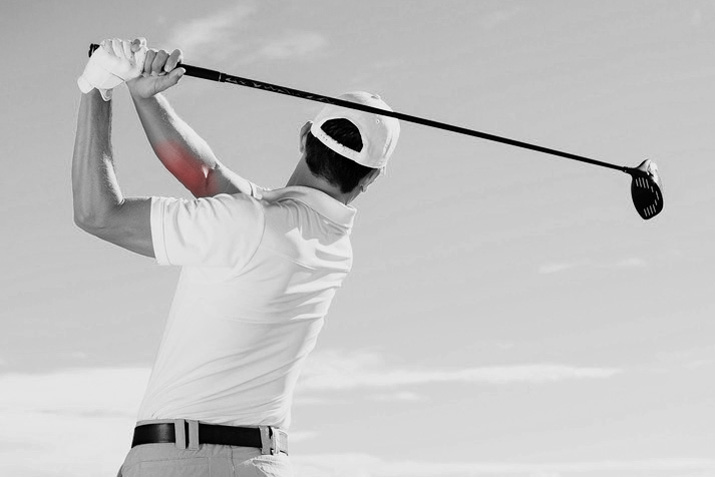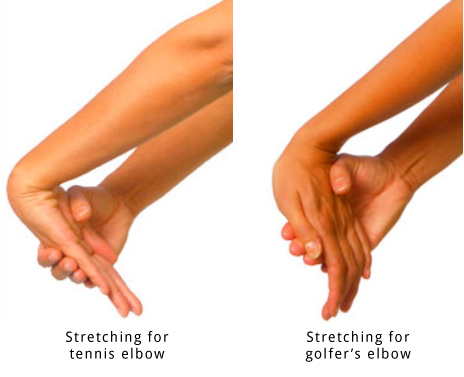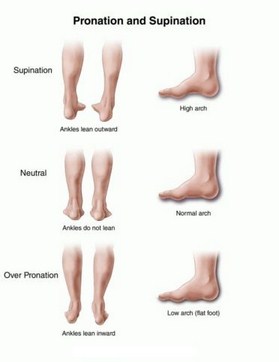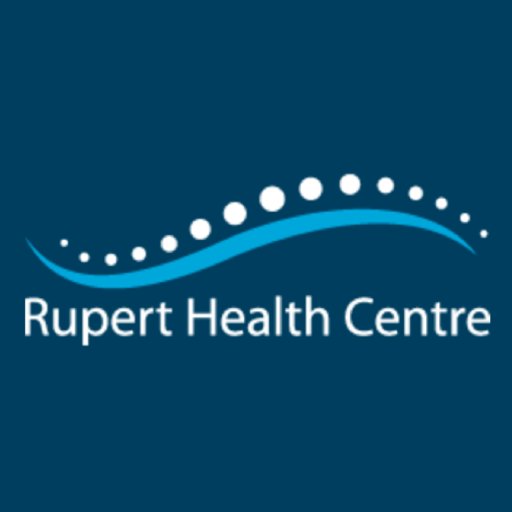Chiropractic
Why is Good Posture so Important?
Posted on July 4, 2017 by admin
Everyone has heard of no slouching or have a good posture but what are the benefits of maintaining good posture?
Proper posture is when your body is aligned in a position where there is the least amount of stress on your ligaments, tendons, and muscles. There are three types of good posture: sitting, standing, and lying down.
Proper sitting posture consist of a straight back with your buttocks touching the back of the chair. The feet should be parallel and touching the ground with your knees bent at a right angle.

Good standing posture is when your ears, shoulders, hips, knee, and your ankle are lined up straight in a vertical line.

A healthy lying position is keeping the cervical spine in a neutral position.

What are the benefits of having good posture?
- Back and neck pain are reduced
- prevents muscle aches
- your muscles are able to work more efficiently due to reduced muscle strain
- decreases risk of arthritis
- vital organs are in proper position due to proper alignment of ligaments, tendons, and muscles
- protects spinal joints from injury
- helps with proper breathing which is important for your cardiopulmonary system for effective organ function
- provides a tall and slim appearance
What are the risks of poor posture?
- increased risk of experiencing back and neck pain
- abnormal muscle strain results in inefficient muscle movement
- problems with breathing and digestion may occur
- muscle tightness
- increased stress on the spine can result in subluxations

If you are experiencing muscle tightness or back pain, one important aspect to fix those problems could be your posture! Maintaining good posture can do wonders for your body and if you are constantly sitting down due to your job then try out these office stretches to help prevent muscle aches caused by prolonged periods of sitting.
6 Stretches to help Relieve Sciatic Pain!
Posted on June 28, 2017 by admin
Sciatica occurs when the sciatic nerve which runs along from the lumbar vertebrae down to the leg is compressed. There are many reasons why sciatica occurs. It most commonly occurs due to a herniated disk or bone spur on the spine compressing onto the sciatic nerve. In most cases, the pain associated with sciatica can be fixed with non-surgical treatments.

Here are some exercises and stretches you can try to relieve sciatica pain:
- Reclining pigeon pose: This pose helps with opening up your hips by first laying down on your back then bring your right leg to a right angle. Bring the left leg up and rest your right ankle on the left knee and hold. This helps stretches out the piriformis muscle.
- Sitting pigeon pose: This pose is similar to the reclining pigeon pose but the starting position is sitting upright.
- Forward pigeon pose: This pose begins with kneeling on all four and then bringing the right ankle over the left knee, similar to the reclining pigeon pose.
- Knee to opposite shoulder: Starting in the supine position, bring one of your knee up to the opposite shoulder.
- Sitting spinal stretch: Sitting down with your legs straighten out then have your right leg, bent, and cross over the left leg lining up with the left knee. After, gently turn your body towards the right.
- Standing hamstring stretch: Have your right leg elevated near the hip level and slowly bend down to reach your toes.

These stretches can help reduce or relieve pain associated from sciatica and are convenient to do at home!
The Difference Between Golfer’s Elbow and Tennis Elbow
Posted on June 15, 2017 by admin
Medial epicondylitis, also known as Golfer’s elbow, is a condition where the tendons on the inner part of the elbow are inflamed or injured. The tendons on this side are attached to the muscles that help bend the wrist and fingers. Inflammation of the tendon on the outer portion of the elbow is called Lateral epicondylitis or Tennis elbow. An individual with this condition will have pain or difficulty extending the fingers or bending the wrist backwards. Although they are commonly known as Tennis elbow and Golfer’s elbow, it does not mean only people who regularly play tennis or golf experience this. Normally, these conditions occur when that area is overused.

Who are affected?
Not only golf and tennis players are affected, many individuals who overuse their forearm by bending the wrists can be affected too. Tennis elbow is common in adults between the age of 30-50. Individuals who are plumbers, cooks, or carpenters are more at risk for developing this condition due to overworking of the muscles and inflaming the tendon. For individuals who garden, shovel or play golf frequently may be at higher risk of developing medial epicondylitis as these actions mainly require the use of flexor muscles in the forearm.



Symptoms
For Tennis elbow, symptoms include:
- pain radiating from outside of the elbow down to the forearm
- tenderness on the outer part of the elbow
- weak grip or weakness in forearm
- pain is present when gripping
For Golfer’s elbow, symptoms include:
- pain and tenderness on the inner part of the elbow extending to the inner forearm
- stiffness
- weakness in hands and wrists
- numbness or tingling sensation in the ring and pinky finger
Normally, treatments for both medial and lateral epicondylitis are non-surgical. The most important treatment for these conditions is to rest or reduce the amount of strain on the tendon and muscles surrounding the elbow. This treatment may require wearing a brace or splint. Other treatments available are ice, stretch, or electro therapy.

If these conditions worsen or do not show any improvement, find a licensed health care provider
Spondylolysis vs Spondylolisthesis
Posted on June 13, 2017 by admin
Spondylolysis is a condition where there is a fracture at the vertebrae while Spondylolisthesis is the term used when one of the vertebrae slips out of alignment which may affect the spinal nerves. In some severe cases, if the bone is fractured too much, it can lead to the slippage of the bone. This injury is common in young athletes who often have chronic stress applied to the lower back.
Spondylolysis
As mentioned above, this is a condition when a fracture has occurred on the vertebrae. The vertebrae consists of 24 bones stacked on top of each other producing your spine which contains the thin but crucially important spinal cord. The fracture mostly occurs at the weakest area, pars interarticularis, which is the thin part of the vertebrae connecting the upper and lower facet joints. One of the most common area in the vertebrae for these fractures to occur is in the lumbar region, mostly at the fourth or fifth lumbar vertebra.
Spondylolisthesis
This condition is more prone to occur if you already have Spondylolysis. When the pars interarticularis portion of the vertebra is damaged or separated, it can lead to slippage of the vertebra in the forward position and causes pinching of the spinal nerves that affects other regions of your body. This commonly occurs at the lumbar region, where the “S” curve is prominent and most of the stress occurs at this region.

Symptoms
Some symptoms may not occur if the cases are mild for both Spondylolysis and Spondyloisthesis. During mild cases, the condition is normally determined when looking through an x-ray. Symptoms of these conditions include low back pain, stiffness, muscle spasms, and difficulty standing or walking.
For Spondyloisthesis, numbness or tingling sensation can occur as there is impingement of the spinal nerves due to the shift in the vertebra.
Treatments
The goal of these treatments is to reduce pain, allow the fractures to heal so the individual can return to daily sport activities without major complications. There are two surgical and non-surgical treatments for these two conditions.
Non-surgical treatments include:
- Rest
- Exercise Therapy or Chiropractic Treatment
- Braces
If these non-surgical treatments do not help then the doctor will recommended surgical treatment on the vertebra.
Prevention
Always stay safe when playing sports to reduce the risk of developing Spondylolysis and Spondyloisthesis. If you experience any of the symptoms mentioned above, make a quick appointment with one of our practitioner here at Rupert Health Centre as your vertebrae physically functions to protect your nerves, not to cause damage to them!
Temporomandibular Joint Disorder
Posted on June 8, 2017 by admin
Temporomandibular joint disorder, also known as TMJ disorder, occurs when there is pain or discomfort at the temporomandibular joint located between the jaw and temporal bone of the skull. This joint acts as a sliding hinge that executes jaw movements such as talking, eating, and yawning by using the jaw muscles.


Causes
The causes of TMJ disorders can be hard to diagnose because there are many contributing factors causing discomfort to that area. These include:
- Dislocation of the jaw joint
- Arthritis
- The disk found at the joint is out of alignment
Symptoms
Some symptoms you may experience when you have a TMJ disorder are:
- pain or tenderness at the jaw joint
- aching around your ears
- difficulty chewing
- locking of the jaw
- aching shoulders
There are many treatment options to consider if you have a TMJ disorder. Taking anti-inflammatories can decrease the amount of pain you are experiencing. If one of the underlying causes for your TMJ pain is due to grinding at night, your doctor may suggest a mouth guard to prevent build up of stressed caused by teeth grinding at night. Taking a break from chewing and eating softer foods can help relieve some pain so there is less stress on your jaw muscles. Some soft tissue therapy has been known to help relieve some pain with this condition. There is also surgery to help with TMJ disorders however it is not suggested unless other treatments are not helping or it is affecting your daily living.

Many doctors can help you with your TMJ disorders and suggest treatment options appropriate for your condition. Seeing a dentist, family doctor, or even a chiropractor can help with your TMJ pain.
Smoking Effects on Musculoskeletal Health
Posted on June 1, 2017 by admin
You may know that smoking increases the risk of developing cardiovascular and respiratory diseases, but did you know it can negatively affect your musculoskeletal system as well? The musculoskeletal system includes the bones, muscles, joints, ligaments, and tendons which all play a role in executing movements. Smoking can weaken your bones and makes the healing process slower so your body becomes more prone to injuries and chronic inflammation.

How does Smoking Affects your Health?
- It increases the risk of developing Osteoporosis: Smoking increases the rate of mineral loss in your bones so it weakens overtime causing fractures to occur easier and more frequently. The bone is weakened through several ways. The nicotine found in cigarettes can slow down the production of bone-forming cells called osteoblasts so more bone is broken down rather than being made.
- The blood vessels become damaged: When your blood vessels are damaged, the amount of blood and oxygen supply to your tissues is significantly reduced which affects the tissue’s performance. This can lead to cardiovascular diseases and problems while exercising.
- Smoking increases injury and pain to muscles: Smokers tend to suffer chronic or traumatic injuries to the muscles more often than non-smokers. This is due to the slower healing process smokers have, making it more prone to injuries. As it is slower for the muscles to heal, the duration of pain and inflammation lasts longer. Studies show that smokers are more likely to experience tendinitis and shoulder pain resulting in a higher risk of getting rotator cuff injuries.
- Exercise is negatively affected: The carcinogens in cigarettes damages the lung tissues so overtime your lungs cannot work as efficiently compared to a healthy lung. During exercise, your body requires more oxygen due to quicker metabolic rates occurring in working tissues. If the lungs are damaged, it is harder to reach that oxygen supply needed therefore your lungs need to work harder to maintain its function. Smokers will experience shortness of breath a lot more than non-smokers. Demand for oxygen causes heart rate to increase and blood flow to tissues will increase. If there is damaged to the blood vessels, this can cause more strain in your cardiovascular system which can be dangerous for your body overtime.
Smoking cigarettes negatively impacts your health not only damaging your lungs but also your musculoskeletal system which is another reason why quitting smoking should be encouraged. The earlier you stop smoking, some damages in your body can still be reversible. There are different methods to help quit smoking and even when you do but still experience musculoskeletal pain, you can make an appointment with one of our practitioners today!
Rotator Cuff Injury
Posted on May 10, 2017 by admin
Rotator cuff injury is one of the causes when you are dealing with shoulder pain. Tears in the rotator cuff can occur when there is a single injury or due to gradual onset of repetitive motions around the shoulder joint. Rotator cuff injury is when there are inflammation, tears or overuse of the muscles or tendons that make up the rotator cuff in the shoulders. They are important for motions such as rotating your arms inward (internal rotation of the arm at the shoulder joint) or outwards (external rotation of the arm at the shoulder joint).

Some symptoms you may experience if you have injured your rotator cuff are pain, weakness, limited motion, and feelings of instability at the shoulders. There are many factors that contribute to an increased risk of developing injury to the rotator cuff; some factors are age, family history, occupation or sports that rely on repetitive prolonged movements of the shoulder girdle. If you believe your shoulder pain is associated with rotator cuff injury, it is always recommended to make an appointment with your family doctor to eliminate other common causes.

As mentioned above, the best method to understand what your body is attempting to warn you is to visit your family doctor or a shoulder specialist to be properly diagnosed with rotator cuff injury. There are different ways for your doctor to check what is the cause of your shoulder pain. One method would be the physical and history exam which consists of applying different motions around the shoulder to know which movements makes it better or worse and what occupation or repetitive motions you have done leading to this gradual onset of shoulder pain. Other methods consist of x-rays and MRI to see what is occurring at your shoulder comparing with a healthy shoulder girdle.
There are a wide variety of treatments depending on the type of injury you were diagnosed with. If it is a mild condition, the most common treatment would be exercises that target the rotator cuff muscles aiming to provide stability and strengthen the shoulders. If the injury is more serious and critical, then surgery may be suggested. Depending on the type of injury, there are different kinds of operations to help with shoulder pain.
Carpal Tunnel Syndrome
Posted on May 5, 2017 by admin
Carpal Tunnel Syndrome is a term that is commonly mentioned about when people have pain in their wrists. Exactly what is Carpal Tunnel Syndrome?
First of all, where is your carpal tunnel? It is located in your wrist or the base of your hand and it is a narrow tunnel containing ligaments, bones and specifically the median nerve. The median nerve is important for bending the fingers, specifically the thumb, index, middle and ring finger. The median nerve does sensory innervation in the hand as well. Now that we know where it is in your body and what runs through it, we are able to understand the symptoms that occurs when someone has Carpal Tunnel Syndrome.

This condition happens when the surface area has been decreased which results in the compression of the median nerve. Symptoms include tingling or numbness of the fingers, weakness, and pain. As this condition prolongs, the muscles at the base of the thumb begin to waste away and grip strength of the hand decreases significantly. Also, sensation in the fingers or hands can worsen to the point where it can be difficult to determine whether something is hot or cold. How do you know if you have Carpal Tunnel Syndrome? If you are experiencing some or all of the symptoms discussed above then it could be a possibility and making an appointment with a doctor would be the best diagnosis. Your family or chiropractic doctors will do a few examinations to determine the pressure within the carpal tunnel and how much the median nerve is compressed.
There are different forms of treatment for Carpal Tunnel Syndrome. There is non-surgical treatment and then there are surgical ones. It is best to check with your doctor to know which treatment is suitable for you. One non-surgical method would be to wear braces or night splints to sleep, this prevents the wrist from bending (flexion) while you sleep in order to relieve some pressure. Another method would be surgery, which widens the carpal tunnel so there is less compression on the median nerve.
Who is at risk for this condition? Everyone can have Carpal Tunnel Syndrome but some individuals are more at risk than others. People who have a family history of Carpal Tunnel Syndrome, pregnant women, individuals who are always creating repetitive flexing motions on the wrist, and people who have injured their wrists have a higher risk of getting this condition.

Your wrists are very important for hand movement and you use your hands everyday to complete tasks so make sure to stretch and let your wrist rests and they will appreciate it!
Custom Orthotics and How They Can Be Helpful
Posted on May 4, 2017 by admin
Everyday, we use our feet to help us get to our destination, whether it is to the bus stop or walking around the mall looking for a gift. We rely on our feet for the majority of our daily movement that we do not realize how much stress is put upon them. When we stand, a lot of our body weight is supported and stabilized by the hips and feet to prevent us from falling over. If our feet has to endure the amount of stress we give daily then what can we do to give them our support back?
Wearing custom orthotics is one of the solutions for providing our feet some support.

Orthotics can be custom made or found off the shelf because every individual has different arches and foot structure. They are devices that are externally used and can help with many issues such as reducing pain when standing or walking, controlling biomechanical alignment, and ease pressure from muscles and tendons. By giving the right support for your feet, it can help eliminate pain in the lower leg or hip. When you walk, many muscles in the leg work together to create that motion which is why foot pain can be associated with other pain located in the knee, ankle and hip.

Everyone has differently structured feet. Some have a higher foot arch than others and some experience overpronation, meaning the foot rolls inward and the arch of the foot flattens. This is where orthotics play a role.

If someone has a high foot arch, we can imagine that the heel and the ball of the foot will be receiving a greater level of pressure compared to the middle portion of the foot. To make it simple, we can look at the foot as a bridge where there is an arch in the middle that makes no contact with the ground while the two ends of the bridge does. How orthotics can help is that it shapes the foot of interest and evens out the weight and lower the pressure points localizing to specific areas. Another problem associated with foot pain is when the connective tissue lining the bottom of the foot, the plantar fascia, is irritated and inflamed, pain would occur when there is moving and stretching of the foot. This is known as Plantar Fasciitis. With orthotics, it helps shape the bottom of the foot so there is less tension on the plantar fascia therefore reducing inflammation and pain.
Here are Rupert Health Centre, our practitioners, Dr. Kevin Leung and Dr. Jason Cheng, provide custom made orthotics after a careful evaluation of the foot’s condition along with a slipper cast. This cast is then sent to Excel Biomechanics to be made and picked up here at Rupert Health Centre. If you are experiencing pain or would like to get a new set, do not hesitate to make an appointment with one of our practitioners today!
Your First Chiropractic Appointment
Posted on March 31, 2017 by admin
Chiropractors can work wonders for those suffering from musculoskeletal or joint pain. Whether you have back or neck pain, have recently been injured in a car or work-related accident, or are suffering from conditions such as sciatica or some headaches, a chiropractic appointment can help relieve many of your symptoms. Here at the Rupert Health Centre, our practitioners work hard to improve your physical well-being, while guiding and supporting you along the way. For those who are new to chiropractic, this is what you can expect during your first visit.
At Rupert Health, the first appointment will usually last around 45 minutes, depending on the severity and complexity of your conditions. A chiropractor will meet with you and inquire about your symptoms, your medical and family history, discuss with you any possible risks to injury that can occur during treatment, and make sure you have given informed consent before any treatment begins. Afterwards, they may complete a series of physical tests to measure your range, strength, and neurological integrity, in order to assess what treatments might be necessary for recovery.
Based on your medical history and symptoms, a chiropractor may choose to use a diagnostic study to more accurately diagnose your condition. If needed, the Rupert Health practitioners occasionally use an on-site X-ray to get more information on any conditions.
Treatment may or may not be offered during the first appointment. Within the chiropractic practice, there are many different treatment options available for a variety of symptoms and patients. The practitioner will discuss with you which treatment options may be best, which can include spinal mobilization and manipulation (manual therapy), shockwave or laser therapy, heat pads, and other modalities, all of which are non-invasive. In addition to therapy, the chiropractor may suggest and demonstrate some stretches or exercises to help you improve your condition, with Rupert Health also providing products such as exercise balls, resistance bands and supports for purchase.
If you’re experiencing muscle or joint pain and wondering about seeing a chiropractor – don’t fret! The practitioners here at Rupert Health will make sure you have all the information, and support you through the steps and treatment toward your recovery. Make an appointment with a Rupert Health Centre practitioner today!


